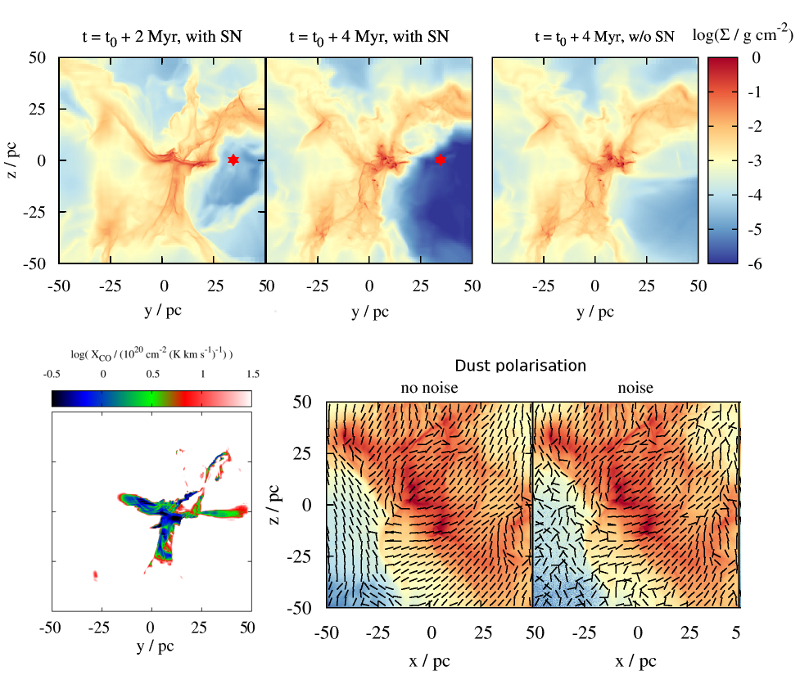| EPoS Contribution |
|
Linking Molecular Cloud Simulations to Observations
Daniel Seifried U Koeln, Cologne, DE | |
| We present novel simulations of molecular cloud formation in galactic disks within the SILCC collaboration. The simulations combine for the first time high spatial resolution (0.1 pc), the impact of the large-scale, galactic environment, as well as a detailed chemical network for H_2 and CO formation. The simulations thus provide a unique tool to discuss three important aspects: the (1) chemical and (2) dynamical evolution of molecular clouds, as well as (3) the comparison with actual observations by means of synthetic observations. We will show that both, H2 and CO have to be modelled on-the-fly in the simulations with sub-parsec resolution. We show the complex behaviour of the transition of atomic hydrogen to molecular hydrogen, with H2 being present in rather low-density gas (~ 30 cm-3) due to turbulent mixing from the denser regions. The XCO factor remains relatively constant over time since CO(1-0) becomes optically thick relatively quick. We demonstrate that the effect of supernovae on the cloud evolution diminishes over time from being the dominant turbulence driving source in its earliest stage to being a sub-dominant effect at later stages, where gravity has taken over. Finally, in view of the increasing number of polarisation observations, we present synthetic dust polarisation maps created with the POLARIS code, which contains - as the first - a self-consistent description of dust grain alignment efficiencies. We will show that polarisation vectors in clouds are accurate within about 10 degree compared to the real field structure and that de-polarisation on clouds scales results from strongly tangled field lines rather than inefficient grain alignment. We will also compare our results with current observations by the Planck and BlastPol collaboration and give guides for future polarisation observations. | |
 | |
| Caption: The figures shows the various aspects covered in the talk: Top row: Effect of external supernova explosions on the dynamics of molecular clouds. The later the clouds is impacted by a supernova, the lower is the influence of the supernova; at late times gravity is the main source of turbulence in the cloud. Bottom left panel: The XCO factor - obtained from the CO abundances simulated on-the-fly in the simulations - shows a significant variation of about 1 order of magnitude over the cloud region. The average, however, remains relatively constant over time. Bottom right panel: Synthetic dust polarisation maps obtained by the POLARIS code showing the effect of noise on the accuracy of the polarisation vectors. | |
| Collaborators: S. Walch, U Cologne, DE T. Naab, MPA, Garching, DE P. Girichidis, AIP, Potsdam, DE S. Haid, U Cologne, DE S. Reissl, ITA, Heidelberg, DE |
Key publication
Suggested Session: Molecular clouds |

